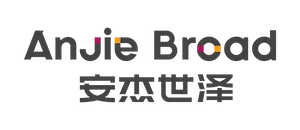On September 18, 2020, the State Administration for Market Regulation ("SAMR") released the Guidelines on Antitrust Compliance for Undertakings. On March 21, 2024, SAMR released a draft for public comments of the revised Guidelines on Antitrust Compliance for Undertakings (the "New Compliance Guidelines"), which provided more detailed explanations and recommendations on how undertakings should establish antitrust compliance management systems and offered a significant number of highly relevant examples. The most prominent feature of the New Compliance Guidelines is the addition of the antitrust compliance incentive mechanism, which considers the establishment and implementation of antitrust compliance management systems as a discretionary factor for the antitrust enforcement agency when making decisions regarding the handling of undertakings' antitrust behaviors.
This article intends to focus on how undertakings should understand and apply the rules of the New Compliance Guidelines, pertaining to antitrust compliance incentive mechanisms, in practice. In an effort to provide a reference for undertakings to establish and improve internal antitrust compliance management systems.
1 Antitrust Compliance Incentive Scenarios
Articles 34 to 37 of the New Compliance Guidelines specify four scenarios of antitrust compliance incentives: (1) Pre-Investigation Compliance Incentives; (2) Compliance Incentives in Commitment Mechanism; (3) Compliance Incentives in Leniency Mechanism; (4) Compliance Incentives within the Discretionary Range of Fine Imposition.
1.1 Pre-Investigation Compliance Incentives
Article 34 of the New Compliance Guidelines stipulates Pre-Investigation Compliance Incentives as follows: "Where undertakings have ceased suspected monopolistic behaviors before being investigated by the antitrust enforcement agency, and the suspected monopolistic behaviors are minor and have not caused competitive harm, the enforcement agencies may consider the undertakings' establishment and implementation of antitrust compliance management systems as a factor in determining whether the undertakings have promptly corrected their behaviors or whether there is subjective fault, and may exercise discretion not to impose administrative penalties in accordance with Article 33 of the Administrative Penalty Law of the People's Republic of China (hereinafter referred to as the 'Administrative Penalty Law')."
Article 33 of the Administrative Penalty Law of the People's Republic of China ("Administrative Penalty Law") specifies three circumstances where administrative penalties may not be imposed: (1) Where the illegal behavior is minor and is promptly corrected without causing harmful consequences, administrative penalties may not be imposed; (2) For first-time minor violations that are promptly corrected, administrative penalties may not be imposed; (3) Where the party has evidence to prove the absence of subjective fault, administrative penalties may not be imposed; where otherwise provided by laws and administrative regulations, such provisions shall apply.
The above provisions of the New Compliance Guidelines consider the establishment and implementation of antitrust compliance management systems as a factor to be considered when applying the "administrative penalties may not be imposed" in antitrust investigation cases. The conditions for its application include the following:
1.1.1 The suspected monopolistic behavior has been terminated before the administrative investigation.
Undertakings have terminated suspected monopolistic behavior before being investigated by the antitrust enforcement agency. If the undertakings' suspected monopolistic behavior has not been terminated at the time of investigation by the antitrust enforcement agency, the pre-investigation compliance incentive mechanism cannot be applied. In the antitrust enforcement practice of China, the investigation procedure of suspected monopolistic behavior of parties involved two stages: (1) verifying the clues of suspected monopolistic behavior; (2) filing a formal investigation case. Whether the application conditions for pre-investigation compliance incentives are strictly limited to before the stage of verifying clues of suspected monopolistic behavior needs further clarification.
During the process of verifying the clues of suspected monopolistic behavior, the antitrust enforcement agency usually conducts preliminary investigations into relevant issues with the parties involved. Most parties involved, upon realizing that such behaviors are still being implemented, would usually terminate relevant behaviors suspected of violating the Anti-Monopoly Law of the People's Republic of China ("AML") before the antitrust enforcement agency filing a formal investigation case. In such cases, the parties involved usually can argue to the antitrust enforcement agency to consider the fact that the suspected monopolistic behavior has been terminated, as a discretionary factor in the administrative penalty decision.
- For example, in the administrative penalty decision made by the Beijing Administration for Market Regulation ("Beijing AMR") on September 1, 2023, against the Beijing Chess Association for organizing its members to reach and implement a monopoly agreement, the Beijing AMR initiated an investigation into the suspected monopolistic behavior of the parties involved from January 2022 and formally launched a case investigation on August 4, 2022. In the final administrative penalty decision, the Beijing AMR considered the fact that the parties "voluntarily terminated the monopoly agreement before the case was formally filed and mitigated the harmful consequences" as a factor in determining the percentage of the fine based on sales revenue..1
Furthermore, according to Article 36 of the Administrative Penalty Law, which sets out the statute of limitation for administrative penalties, "where the illegal act is not discovered within two years, the administrative penalty shall not be imposed; if the illegal act involves life, health, and safety of citizens, financial security, and causes harmful consequences, the above-mentioned period shall be extended to five years, which does not apply if otherwise provided by law. The period specified in the preceding paragraph shall be calculated from the date the illegal act occurs; if the illegal act is in a continuous or ongoing condition, it shall be calculated from the date the act ends." Therefore, if the monopolistic behavior investigated by the antitrust enforcement agency has exceeded the statute of limitations for administrative penalties, the parties involved can directly invoke this provision to argue that they are not liable for administrative penalties.
1.1.2 The suspected monopolistic behavior is minor and has not caused competitive harm.
Article 34 of the New Compliance Guidelines stipulates that, based on the provisions of Article 33 of the Administrative Penalty Law regarding "minor illegal acts" and "no harmful consequences", "suspected monopolistic behavior that is minor and has not caused competitive harm" is a condition for the application of the pre-investigation compliance incentive mechanism.
With regard to interpreting Article 33 of the Administrative Penalty Law and determining what constitutes "minor illegal acts" and "no harmful consequences", factors considered in enforcement and judicial practice typically include; the duration of the illegal behavior, the existence of illegal gains and the amount involved and whether the illegal act has caused other parties to incur losses or merely constituted a procedural violations. To regulate the non-imposition of administrative penalties for minor illegal acts, in accordance with the law, many local law enforcement agencies have released corresponding "lists of minor illegal acts that are not subject to administrative penalties".
- For example, the List of Minor Illegal Acts in the Field of Ecological Environment in the Yangtze River Delta Region, for which Administrative Penalties Shall Not Be Imposed According to Law, jointly formulated by the ecological environment departments and the judicial departments of Shanghai, Jiangsu, Zhejiang, and Anhui, covers 22 items across 7 ecological environment areas, including construction project management, prevention and control of atmospheric pollution, prevention and control of solid waste pollution, prevention and control of noise pollution, emergency management of environmental incidents, pollutant discharge permits, and environmental management systems. These are divided into two categories: minor offenses (1 item) and first-time offenses (21 items).2
Monopolistic illegal behavior typically has a significant impact on market competition, consumer interests, and/or public interests. Regarding how to determine whether suspected monopolistic behavior constitutes a "minor suspected monopolistic behavior that has not caused competitive harm", further clarification is needed from relevant regulations and enforcement practices. For example, for the imposition of unreasonable trading conditions through the abuse of market dominance position, if the parties only agree on the content of the suspected unreasonable trading conditions in the agreement but do not strictly implement them and do not gain unfair competitive advantages as a result, could it be argued that it constitutes a " minor suspected monopolistic behavior that has not caused competitive harm"? Similarly, for vertical price monopoly agreements, if the market share of the undertaking does not meet the criteria for the application of the "safe harbor" mechanism but is relatively low, could it be argued that it constitutes a "situation where suspected monopolistic behavior is minor and has not caused competitive harm"?
1.2 Compliance Incentives in Commitment Mechanism
Article 35 of the New Compliance Guidelines stipulates the "Compliance Incentives in Commitment Mechanism": "If an undertaking commits to taking specific measures to eliminate the consequences of suspected monopolistic behavior within a period recognized by the antitrust enforcement agency, the agency may consider the undertaking's anti-monopoly compliance management system when deciding whether to suspend the investigation, and assess the implementation of the anti-monopoly compliance management system when deciding whether to terminate the investigation. The specific criteria and procedures for undertakings to apply for suspension or termination of the investigation may refer to the provisions of the Prohibition of Monopoly Agreement Regulations, the Prohibition of Abuse of Market Dominance Regulations and the Guidelines for Operators' Commitments in Monopoly Cases and other regulations."
Article 53, Paragraph 1 of the AML stipulates: "If the undertaking under investigation for suspected monopolistic behavior commits to taking specific measures to eliminate the consequences of such behavior within a period recognized by the antitrust enforcement agency, the agency may decide to suspend the investigation. The decision to suspend the investigation shall specify the specific content of the commitments made by the undertaking under investigation." Paragraph 2 of Article 53 states: "If the antitrust enforcement agency decides to suspend the investigation, it shall supervise the performance of the commitments by the undertaking. If the undertaking fulfills the commitments, the antitrust enforcement agency may decide to terminate the investigation."
The above provisions of the AML establish the "Commitment Mechanism" in the anti-monopoly investigation procedure, which suspends the administrative enforcement investigation procedure for suspected monopolistic behaviors by taking specific measures to eliminate such behaviors within a certain period, with the ultimate goal of terminating the investigation. In the practice of anti-monopoly enforcement, the establishment and implementation of anti-monopoly management systems by the parties have become key factors considered by the antitrust enforcement agency when making decisions to suspend or terminate investigations. Article 35 of the New Compliance Guidelines further clarifies this consideration factor, reinforcing the important role of anti-monopoly compliance system construction and implementation in the application of the commitment mechanism.
- For example, in the decision to suspend the investigation commenced by the Beijing AMR on September 16, 2019, regarding suspected monopolistic behavior by Lenovo (Beijing) Co., Ltd. ("Lenovo Beijing"), the remedial measures pledged by Lenovo Beijing include "organizing legal training, strengthening training and guidance on competition laws and regulations for all employees, especially those in marketing, sales, legal, regional, and service departments, advocating and fostering a culture of competition, enhancing awareness of fair competition in accordance with the law, strictly eliminating monopolistic behavior, and making legal training a prerequisite for employee onboarding."3
1.3 Compliance Incentives in Leniency Mechanism
Article 36 of the New Compliance Guidelines stipulates the "Compliance Incentives in Leniency Mechanism": "If an undertaking voluntarily reports to the antitrust enforcement agency the relevant information of reaching a monopolistic agreement and provides important evidence, and can prove that the undertaking has actively established or improved its anti-monopoly compliance management system and effectively implemented it, and has played an important role in mitigating or eliminating the consequences of illegal behavior, a larger reduction may be applied within the leniency scope. The specific criteria and procedures for undertakings to apply for leniency treatment may refer to the provisions of the Prohibition of Monopoly Agreement Regulations and the Guidelines for the Application of Leniency Programs in Horizontal Monopoly Agreement Cases and other regulations."
Article 56, Paragraph 3 of the AML stipulates: "If an undertaking voluntarily reports to the antitrust enforcement agency the relevant information of reaching a monopolistic agreement and provides important evidence, the antitrust enforcement agency may, at its discretion, reduce or exempt penalties against the undertaking." Article 37, Paragraph 1 of the "Prohibition of Monopoly Agreement Regulations" stipulates: "If an undertaking reaches or organizes other undertakings to reach a monopolistic agreement or provides substantive assistance to other undertakings in reaching a monopolistic agreement, and voluntarily reports the relevant circumstances to the antitrust enforcement agency and provides important evidence, it may apply for a reduction or exemption from punishment in accordance with the law." To provide guidance on how to apply the above mechanism in horizontal monopoly agreement cases, the State Council Anti-Monopoly Commission issued the Guidelines for the Application of Leniency Mechanism in Horizontal Monopoly Agreement Cases, explicitly defining this mechanism as the "Leniency Mechanism" in horizontal monopoly agreement cases.
The above provisions of the AML establish the "Leniency Mechanism" for horizontal monopoly agreement cases. This mechanism permits the reduction or exemption of penalties for entities that voluntarily report their involvement in a suspected monopolistic agreement to the antitrust enforcement agency, along with providing evidence related to the case. According to Article 47, Paragraph 1 of the "Prohibition of Monopoly Agreement Regulations", different degrees of mitigation or exemption from penalties are established in the sequence of successful leniency applicants:
- For the first applicant, the antitrust enforcement agency may exempt penalties or reduce that by no less than 80%;
- For the second applicant, penalties may be reduced by 30% to 50%;
- For the third applicant, penalties may be reduced by 20% to 30%.
Based on Article 47, Paragraph 1 of the Prohibition of Monopoly Agreement Regulations and Article 36 of the New Compliance Guidelines, in the case of successful application for the leniency mechanism, if an undertaking can simultaneously prove that it has "actively established or improved its anti-monopoly compliance management system and effectively implemented it, and it has played an important role in mitigating or eliminating the consequences of illegal behavior", then the antitrust enforcement agency may, according to the sequence of leniency application, apply a larger reduction within the leniency scope. For example, for the second applicant who meets the conditions for leniency mechanism compliance incentives, penalties may be reduced by nearly 50%.
1.4 Compliance Incentives within the Discretionary Range of Fine Imposition
Article 37 of the New Compliance Guidelines stipulates the "Compliance Incentives in the Range of Discretionary Fines": "Before the antitrust enforcement agency makes an administrative penalty decision, if an undertaking actively establishes or improves its anti-monopoly compliance management system and effectively implements it, and it plays an important role in mitigating or eliminating the consequences of illegal behavior, the antitrust enforcement agency may, in accordance with the provisions of Article 32 of the 'Administrative Penalty Law' and Article 59 of the 'Anti-Monopoly Law', exercise discretion to impose lighter or reduced administrative penalties."
Article 32 of the "Administrative Penalty Law" states: "If a party falls into one of the following situations, the administrative penalty shall be mitigated or reduced: (1) voluntarily eliminating or mitigating the harmful consequences of the illegal act; (2) being coerced or deceived by others to commit the illegal act; (3) voluntarily confessing illegal acts unknown to the administrative agency; (4) cooperating with the administrative agency in investigating and dealing with illegal acts and showing meritorious performance; (5) other circumstances specified by laws, regulations, and rules where the administrative penalty shall be mitigated or reduced." Article 59 of the AML stipulates: "When determining the specific fines amount prescribed in Articles 56, 57, and 58 of this Law, the antitrust enforcement agency shall consider factors such as the nature, severity, duration of the illegal conduct, and the consequences of eliminating the illegal behavior."
According to the provisions of Article 37 of the New Compliance Guidelines, even if an undertaking has not previously established a comprehensive anti-monopoly compliance management system, if it actively establishes or improves its anti-monopoly compliance management system and effectively implements it before the antitrust enforcement agency makes an administrative penalty decision which plays an important role in mitigating or eliminating the consequences of illegal behavior, that can still be used as a reason to argue for lighter or reduced administrative penalties.
2 Review of Applications for Antitrust Compliance Incentives
2.1 Substantive Review of the Antitrust Compliance Management System
According to Article 38 of the New Compliance Guidelines, undertakings applying for compliance incentives need to undergo substantive review. The antitrust enforcement agency primarily conducts substantive reviews of undertakings' antitrust compliance management systems in terms of completeness, authenticity, and effectiveness:
- Whether the undertaking's antitrust compliance management system includes systematic management systems, independent compliance management bodies, proportional compliance risk management mechanisms, and stable compliance assurance mechanisms.
- Whether the undertaking has genuinely fulfilled its commitments to antitrust compliance, invested necessary resources in establishing compliance management systems, and strictly enforced these systems.
- Whether the undertaking has established a comprehensive mechanism for investigating violations, whether it can promptly detect violations, effectively control the implementation of violations and the expansion of risks, hold violators accountable, and whether it has a mechanism for post-remediation to mitigate or eliminate the consequences of illegal behavior.
- Other factors requiring examination.
Undertakings applying for compliance incentives under the New Compliance Guidelines are subject to a necessary compliance inspection period by the antitrust enforcement agency before substantive review. The specific duration, methods, subjects of inspection, and whether there are differences in inspection periods for different compliance incentive situations remain to be clarified by relevant regulations and enforcement practices.
2.2 Circumstances Not Eligible for Compliance Incentives
Article 39 of the New Compliance Guidelines stipulates that the antitrust enforcement agency shall not grant compliance incentives to undertakings in the following circumstances:
- If the information provided by the undertaking during the compliance inspection period is incomplete or untrue.
- If there is a significant change in the facts relied upon for the compliance inspection decision.
- If the undertaking fails the substantive review of compliance.
- If the undertaking engages in monopolistic behavior again after obtaining compliance incentives.
- Other circumstances determined by the antitrust enforcement agency.
Regarding the circumstance of "If the undertaking engages in monopolistic behavior again after obtaining compliance incentives," clarification is needed by relevant regulations and enforcement practices on whether it exclusively refers to relevant monopolistic behaviors that have already been investigated by the enforcement agency. For example, if an undertaking receives compliance incentives for suspected abusive practices related to imposing unfair trading conditions after the investigation concludes, clarification is required on whether it would be ineligible to apply for compliance incentives in another investigation initiated by the enforcement agency for other abusive behaviors after the conclusion of the previous case.
2.3 Discretionary Power of the Enforcement Agency in Applying Compliance Incentive Mechanism
Pursuant to Articles 34 to 37 of the New Compliance Guidelines, when the undertaking furnishes evidence substantiating its compliance with the conditions for the application of the antitrust compliance incentive mechanism, the enforcement agency retains discretion to apply the mechanism, indicated by the term "may "rather than a mandatory "shall". To maximize the chances of applying the compliance incentive mechanism, it is advisable for undertakings to, proactively communicate with the antitrust enforcement agency at the earliest juncture of an antitrust investigation, advocate for the application of the compliance incentive mechanism and furnish the requisite supporting evidence.
3 Establishing Compliance Management Systems in Compliance with Antitrust Incentive Requirements
The New Compliance Guidelines provides numerous detailed suggestions and case studies on how undertakings can establish effective antitrust compliance management systems. It is recommended that undertakings use the New Compliance Guidelines as an important reference when establishing and improving their own antitrust compliance management systems. This will effectively enhance the capacity for preventing and controlling antitrust compliance risks and ensure that the antitrust compliance management system adheres to the substantive review standards for antitrust compliance incentives.
3.1 Principles of Antitrust Compliance Management
Undertakings should conduct targeted antitrust compliance management based on market competition conditions, industry characteristics, and their own key points of risks. For example, in industries such as food, beverages, and household appliances that directly target a wide range of end consumers, products are typically sold through numerous agents, wholesalers and distributors, and may involve multiple sales entities in different stages. Therefore, there is a higher risk of antitrust compliance in areas such as vertical price-fixing agreements. Similarly, for undertakings holding proprietary research and production technologies for certain non-substitutable raw materials, they need to pay more attention to the risk of abusing market dominance in agreements signed with downstream entities.
Antitrust compliance management shall cover all business areas, departments, and employees. It should be integrated into various aspects such as decision-making, execution, supervision, and feedback. Furthermore, it must be reflected in decision-making mechanisms, internal controls, business processes and other regulations. Based on this foundation, undertakings of different scales have different compliance resources and needs. Undertakings should establish suitable compliance systems according to their own scale. Large-sized undertakings typically need to establish comprehensive compliance management systems, while medium-sized and small-sized undertakings may establish compliance management systems that are adapted to their own development stage and capabilities based on their actual situations.
3.2 Antitrust Compliance Management Organization
Establishing an antitrust compliance management organizational system composed of an antitrust compliance management body, business departments, and functional departments is essential. Article 6 of the New Compliance Guidelines provides the following explanations:
- The antitrust compliance management body is responsible for coordinating, organizing, and promoting antitrust compliance management work.
- Business departments are responsible for the daily antitrust compliance management work of their respective departments.
- Functional departments such as auditing, legal, internal control, risk control, and supervision perform antitrust compliance management duties within their authority.
Articles 7 to 12 of the New Compliance Guidelines respectively provide explanations and examples on the requirements for a compliance management body, compliance governance body, compliance managers, leading departments for compliance management, compliance management responsibilities of business and functional departments, and construction of compliance teams. These can serve as important reference standards for undertakings when establishing their own antitrust compliance management organizations.
3.3 Compliance Risk Management
Due to the specialized and complex nature of identifying and assessing antitrust compliance risks, Article 13 of the New Compliance Guidelines provides the following explanations:
- Risk Identification: Undertakings can highlight key areas, key processes, and key personnel, strengthen the identification of antitrust compliance risks based on factors such as market competition conditions, industry characteristics, business scale, business models, and core business.
- Risk Assessment: Based on risk identification, undertakings can assess the sources, likelihood of occurrence, and consequences of antitrust compliance risks, and classify and manage compliance risks accordingly. In the event of changes in industry conditions, laws and regulations, undertakings need to promptly conduct risk assessments again.
- Reference to Industry Guidelines: Undertakings in specific fields can refer to industry-specific antitrust guidelines such as the Antitrust Guidelines for the Pharmaceutical Industry, the Antitrust Guidelines for the Automotive Industry, the Antitrust Guidelines for the Platform Economy, and the Antitrust Guidelines for the Intellectual Property Field to enhance targeted identification and assessment of antitrust compliance risks.
Article 14 of the New Compliance Guidelines suggests that undertakings can conduct regular risk assessments based on the differences in compliance risks among different positions and levels. High, medium, and low-risk personnel should be provided with risk reminders accordingly to enhance the targeted and effectiveness of risk prevention and control:
- High-risk personnel: Mainly include senior management, business department managers, sales personnel, personnel familiar with competitively sensitive information, procurement personnel, business personnel, marketing personnel, and personnel responsible for pricing decisions, outward investment decisions, and specific implementation.
- Medium-risk personnel: Mainly include production department personnel, research and development personnel, and personnel who have less contact with other undertakings.
- Low-risk personnel: Mainly include logistics department personnel who generally do not have contact with other undertakings.
To facilitate undertakings in identifying and assessing antitrust compliance risks, Articles 15 to 19 respectively provide explanations and examples of identifying compliance risks related to monopolistic agreements, abuse of market dominance, concentration of undertakings, administrative monopolistic behavior, and refusal to cooperate with inspections and investigations. Articles 20 to 21 provide prompts on legal liability risks and overseas risks, and Article 22 provides suggestions on establishing effective risk disposal mechanisms.
3.4 Operation and Guarantee of Compliance Management
Chapter Four of the New Compliance Guidelines provides explanations and examples regarding the operation and guarantee of antitrust compliance management systems, including the following main points:
- Antitrust Compliance Review: Encourage undertakings to incorporate compliance reviews as a necessary procedure for significant matters such as cooperation agreements with competitors. The initial review responsibility should be carried out by business and functional departments, with subsequent reviews conducted by the antitrust compliance management leading department to promptly address non-compliance issues and prevent antitrust compliance risks.
- Antitrust Compliance Consultation: Encourage undertakings to seek opinions from the antitrust compliance management leading department, external legal advisors, or third-party professional organizations based on the specific circumstances of each matter. In cases involving undertakings' concentration-related matters, undertakings can consult with the State Administration for Market Regulation or relevant provincial-level administration for market regulation.
- Antitrust Compliance Reporting: Encourage the antitrust compliance management responsible person to regularly report on the status of antitrust compliance management to the compliance governance organization and promptly report antitrust compliance risks. Undertakings are encouraged to report on antitrust compliance situations and progress to the antitrust enforcement agency.
- Compliance Training: Encourage undertakings to include antitrust compliance training in employee training plans and provide compliance training support to third parties that may pose antitrust compliance risks to the undertakings.
- Compliance Commitments and Safeguards: Encourage undertakings to publicly commit to antitrust compliance, clarify the adverse consequences of violating compliance commitments in internal personnel management systems, and demonstrate support for antitrust compliance through practical actions.
- Compliance Rewards and Penalties: Encourage undertakings to establish robust assessment, reward and penalty mechanisms for employee behaviors related to antitrust compliance. The results of these antitrust compliance assessments should be a critical component of employee and departmental performance evaluations. Undertakings should promptly handle violations, motivate, and supervise employees to voluntarily comply with antitrust compliance requirements.
- Internal Compliance Supervision Mechanism: Undertakings can conduct regular or irregular compliance self-inspections or organize or hire third-party organizations to conduct special compliance inspections. Undertakings can establish internal antitrust compliance reporting mechanisms, conduct investigations into reported information, and ensure the confidentiality of whistleblowers to prevent any adverse effects on whistleblowers due to their reporting behavior.
- External Compliance Supervision Mechanism: Encourage undertakings to establish external antitrust compliance supervision mechanisms. Undertakings can strengthen the antitrust compliance assessment of business partners through conducting due diligence investigations, performing post-assessment evaluations and adhering to other relevant regulations. These efforts help promote antitrust compliance and collaboratively foster a market environment characterised by fair competition.
- Compliance Management Evaluation and Improvement: Encourage undertakings to regularly evaluate the effectiveness of antitrust compliance management and continuously improve it. In the event of significant antitrust compliance risks or violations, undertakings should promptly conduct effectiveness evaluations of antitrust compliance management.
- Information Technology Construction: Encourage undertakings to strengthen their compliance management infrastructure by integrating compliance requirements, recommendations, and risk control mechanisms into business processes through the application of information technology and stringent process controls. In addition to the use of big data, artificial intelligence, and other digital technologies lawfully to enhance the monitoring and analysis of business management behaviors for compliance.
* Intern Haiyin YUAN and Ezzulddin Nooruldeen contributed to this article.
Footnotes
1 https://www.samr.gov.cn/fldys/tzgg/xzcf/art/2023/art_9bb052c99dff40c49e4a8e3f9186bf2a.html
2 https://sthj.sh.gov.cn/hbzhywpt2022/20230703/6529eabf952c4274ac41ca857741b2ec.html
3 https://www.samr.gov.cn/zt/qhfldzf/art/2019/art_a7928d50862047bba2fb57f7b58bb73c.html
The content of this article is intended to provide a general guide to the subject matter. Specialist advice should be sought about your specific circumstances.




